
Pear-Shaped Diamonds Explained
The pear cut sometimes called the 'teardrop' is part of the brilliant group of diamond shapes. In appearance, the pear cut looks like a round and marquise cut have been joined together, with a rounded end and curved shape that comes to a point.The pear cut is popular in rings, earrings and pendants.
Pear diamonds are cut the same way as brilliant round gems, so they have a very similar degree of brilliance, compromised only by the length.
Pear cut diamonds can be cut with differing proportions making them longer or wider, referred to as wide or slim cuts.
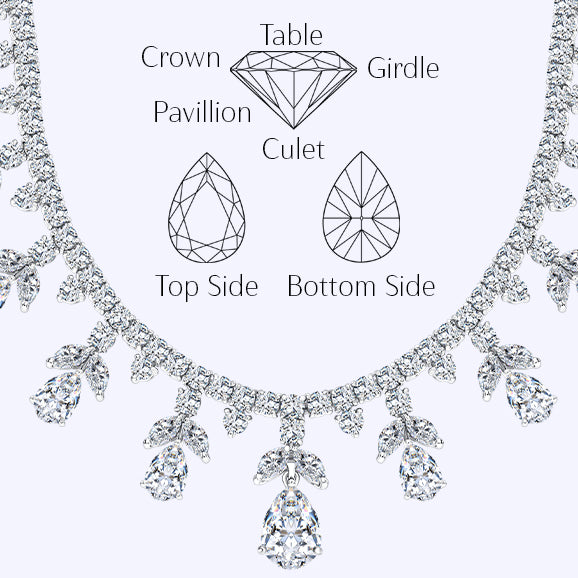
The pear cut diamond was devised by Lodewyck Ven Berquem, a diamond cutter who worked in Belgium in the 15th century. The design was made possible by his invention of a polishing tool called a scaif which enabled diamond cutters, for the first time, to polish perfectly symmetrical facets onto a diamond. This leap forward meant that for the first time, diamonds could reflect the light perfectly giving more brilliance and sparkle than had been possible before.
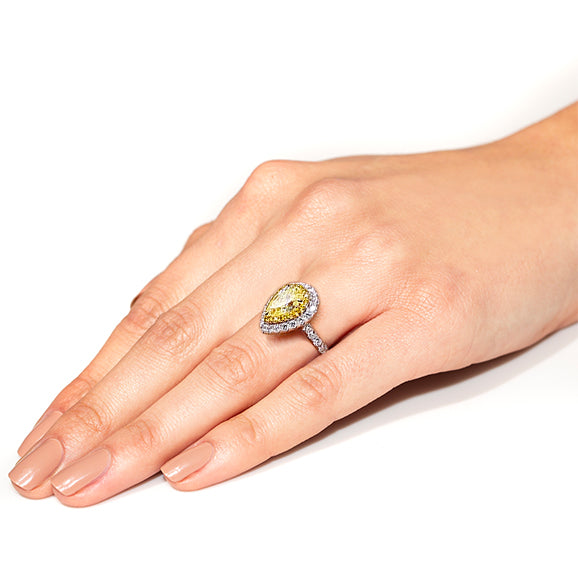
A brilliant-cut pear-shaped diamond usually has 56 facets. Like other elongated cuts, the pear cut tends to look slightly larger carat for carat than a round diamond.
It is customary to wear a pear-cut diamond ring with the point running away from the hand; this tends to make the fingers look longer and more slender.
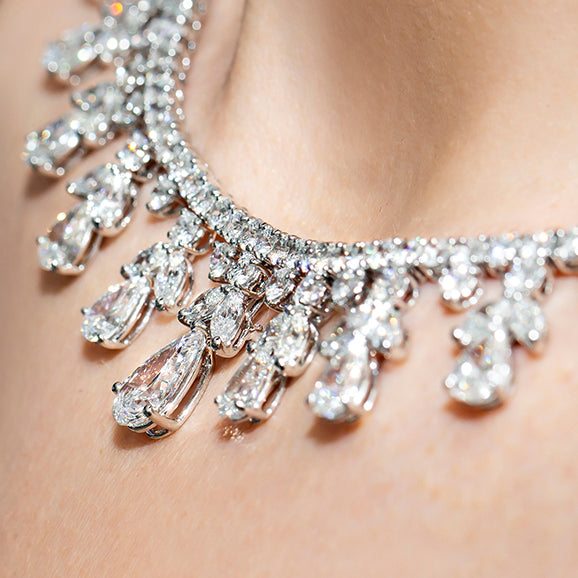
How To Choose The Perfect Pear?
When you buy a pear-cut diamond, make sure that it has good, symmetry. The pointed end should align with the apex of the gem. The curves on the sides of the stone should be symmetrical with no straight edges. The classic, most popular pear cut diamond has a length to width ratio falling between 1.4 and 1.7.
Experts suggest that pear cut diamonds look their best when they are neither too thick or thin. A depth ratio of around 61% and a table (the flat top facet) of approximately 63% will maximise the brilliance and fire of the gem.
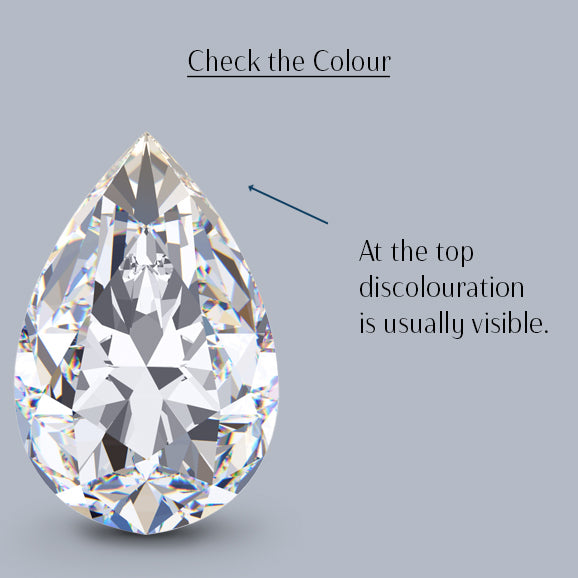
A relatively thick girdle can give additional strength to the diamond protecting the point from damage.
As pear cut diamonds can be cut slim or wide, choose carefully to ensure that you have a stone that looks good to you in the setting you want. A stone that is too fat, or thin will look wrong, but the choice is very much a personal one! As a guideline, choose a longer thinner stone for pendant earrings and a broader shape in a diamond ring, especially if choosing a solitaire setting.
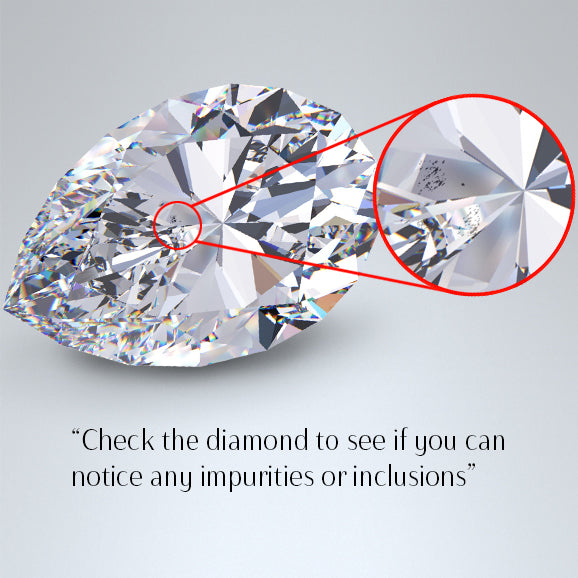
Choose The Right Colour!
Fancy shape diamonds like the pear are more sensitive to the colour grade of the stone. The tip can look distinctly more yellow than the body of the diamond, so make sure that you are happy with the colouration. If necessary, move up a grade or two to get the whiteness you need. Look out for diamonds in the range D to G, especially if you are using a white metal setting. If you intend to use a yellow gold setting, then you may find that even a J or K setting is acceptable.

Clarity Ratings For Pear Cut Diamonds
Unlike emerald and similar shapes, which tend to show off any inclusions, pear cuts are good at concealing them. You do not need to spend so much money on buying the clearest stone. If you are happy with a diamond that looks clear with normal eyesight, then an SI1 grade will be perfectly fine. It is essential to check the stone yourself. The grading report will not tell you that the stone is acceptable; there could still be a visible inclusion below the table.
Pears And Bow Ties
Pear cuts can display a visual effect called 'bow-tie'; this is two darker triangular areas on either side of an elongated, fancy cut diamond caused by a lack of symmetry in the cutting allowing light to escape from the stone. If the bow-tie effect is mild, it can add to the visual impact of the diamond, but if it is pronounced, it detracts from the beauty of the stone. The degree of bow tie that is acceptable is a matter of personal taste, but it does mean that you should check the stone carefully before buying it.
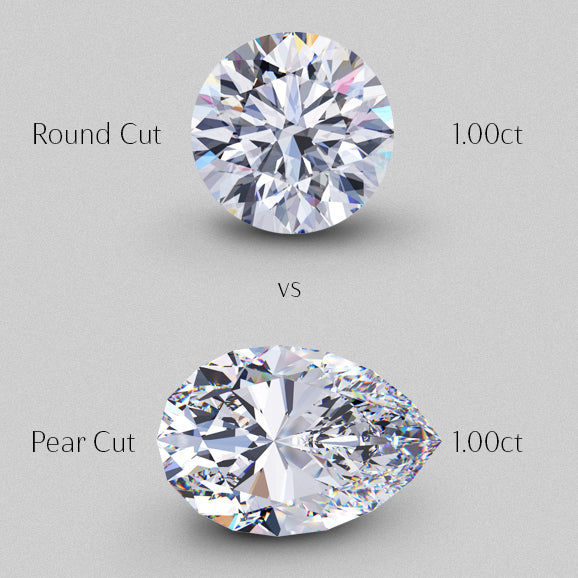
What Should You Pay For A Pear Cut Diamond?
The most popular diamond cut, the round brilliant, cut wastes well over 50% of the weight of the original diamond when it is cut. Pear cut diamonds have much less waste and so cost less to produce. Because the cutter can choose the alignment of the gem within the rough diamond, it can be cut to minimise the effect of inclusions, again making better use of the raw material. Overall, you can expect to pay between 15 and 30% less for a pear cut diamond than for an equivalent sized brilliant round cut one.
Due to the elongated shape, a pear-cut gem looks larger, carat for carat than a round-shaped diamond. You can buy a smaller diamond that has a similar visual size to a larger round diamond; again, this can save money.
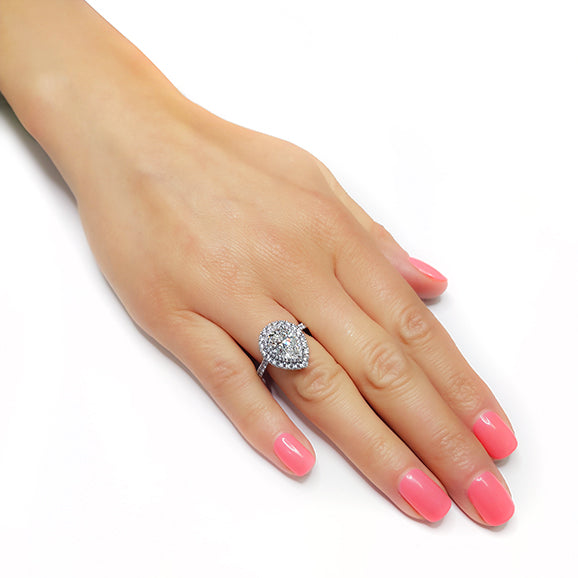
A Pear Cut Diamond Makes The Perfect Engagement Ring
Although round shaped diamonds are much more popular than pear-cut diamonds for engagement rings, there are some excellent reasons why a pear-shaped diamond is a better choice.
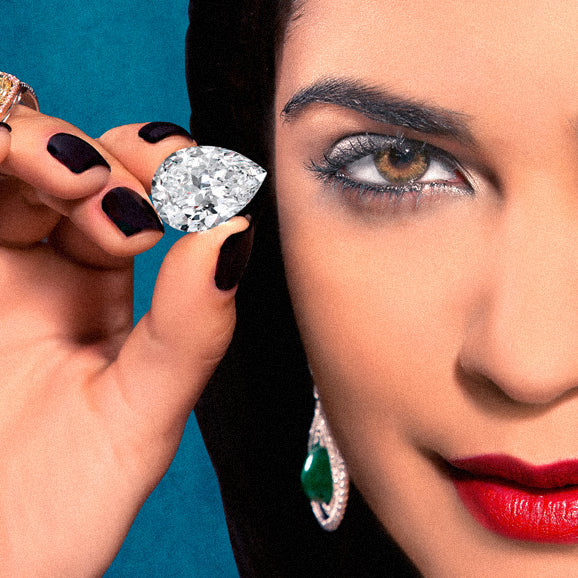
- A pear cut diamond will look unique compared to most other engagement rings, attracting attention and envy from those who see it.
- Versatility: a pear cut diamond can be placed in many different settings and can be either the centre stone or used to accent a round-shaped diamond.
- The shape of the diamond will tend to make the wearer's fingers look longer and more delicate, something that many wearers will appreciate.
- You get more for your money. Not only can you afford a larger stone when buying a pear-cut, but it also looks more substantial than a round cut as well. Most women enjoy having a large, dramatic engagement ring!
- Although the cost is lower, carat for carat, you get all the brilliance of the round cut.
Pear cut diamonds offer many advantages over the conventional round cut diamond shape. They cost less, they have a perceived size advantage, are unusual, impressive, and they suit many different types of jewellery.